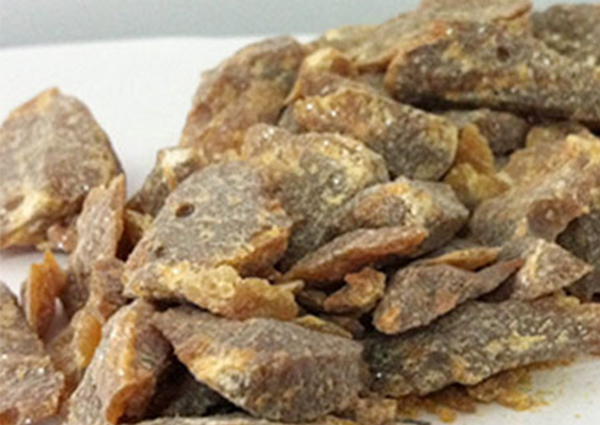
Haicheng Pai Lou town developed Mining Co., Ltd.
Address: No. 1059, Pai Lou village, Pai Lou Town, Haicheng.
Telephone:15841201000Mr. Hu
mailbox:1561481033@qq.com
Q Q:1561481033
Website:sjgrc.cn
Refractories are facing the increasing demand for iron and steel in the society, along with the large-scale production equipment, the increase of blast furnace tapping temperature, the increase of iron output and the extension of tapping time. Therefore, the conditions for the use of blast furnace iron drains are very harsh. The traditional cast iron refractory is replaced by corundum, silicon carbide and graphite. In order to satisfy the use of refractory bricks in hot water ditch of blast furnace, Zhengzhou Juda Refractories Co., Ltd. has trial-produced high alumina silicon carbide bricks through analysis and comparison.
The high alumina bricks used in hot metal ditch firebrick before were found to be related to the corrosion of high alumina bricks in molten iron. On this basis, the corrosion process of high alumina bricks was analyzed. The effect of C content in molten iron on the corrosion of bricks was also analyzed. It was found that the damaged high alumina bricks can be roughly divided into three layers, the surface layer is molten iron adhesion layer, and the inner layer is molten iron adhesion layer. The original brick layer is a porous metamorphic layer with a thickness of about 2mm. The main phase of the metamorphic layer is crystalline less than 100 microns, and there are a large number of pores larger than 100 microns remaining in the microstructure, but no Fe is observed. It can be seen from the metamorphic layer / original brick interface that the original brick part is AL2O3 - SiO2, namely mullite grain. The columnar particles with a length of 100 um in the metamorphic layer are corundum, and the compositions between the columnar particles are found to be AL2O3-SiO 2-FeO glass phase. It can be judged that these components are formed by the reaction of mullite aggregate with molten steel during erosion. The occurrence of this phenomenon is related to whether there is C in molten iron. That is to say, if there is C in molten iron, the glass phase of AL2O3-SiO2-FeO system will disappear in the reduction of SiO2, while FeO will also be reduced to metal Fe, and the remaining AL2O3 will be precipitated as corundum crystal. Based on the analysis of the corrosion test results of high alumina brick and molten iron, the following conclusions can be drawn: after 5 hours of contact between high alumina brick and molten iron at 1650 C, a metamorphic layer is formed on the surface of the brick. The metamorphic layer consists of corundum particles and SiO 2-AL2O3-FeO glass phase filled between the particles. When high alumina brick is eroded by molten iron, the molten iron does not contain C, then mullite is formed. The aggregate dissolves to form SiO 2-ALO 3-FeO glass phase. When C is contained in molten iron, the glass phase is reduced by C to form corundum and metal Fe. Therefore, the influence of C elements in hot metal on the erosion of high alumina bricks shortens the service life of high alumina bricks.
Refractory factory

We have produced high alumina SiC brick through another experiment. The first grade high alumina bauxite clinker, silica carbide sand and SiC powder with 94% lime corundum and SiC content are selected as raw materials. Choose pulp waste liquid as binding agent. In order to prevent oxidation of silicon carbide, three different oxidants were selected and achieved certain results.
According to the requirement of refractories in hot metal ditches, high alumina silicon carbide bricks should have good thermal shock stability, sand erosion resistance and corrosion resistance. More than 80% of the bricks are more than 50Kg in weight. Therefore, the limit size of particles should be properly expanded. This is beneficial to the thermal stability, erosion resistance and erosion resistance of bricks. The particle size of the ingredients is 4mm, and the composition of the raw materials is shown in the following table:
According to the proportioning of various raw materials, the raw materials are mixed into the mixer. In order to make the additives such as oxidants can be evenly distributed in the matrix, a pre mixing process is adopted. The feeding sequence is as follows: first adding high aluminium clinker, brown corundum, SiC sand, dry mixing for 5 minutes, then adding pulp waste liquid, wet mixing for 2 minutes, then adding mixed fine powder, mixing for 15 minutes, then discharging, totally mixing for 22 minutes. Then, in 1000 ton mechanical press, the density of high alumina SiC bricks is 2.76g/cm 3 and 2.75g/cm 3 respectively. Sintering of high alumina SiC bricks at low temperature stage, in order to avoid cracking caused by excessive removal of residual moisture in the body, it is necessary to raise the temperature slowly and the heating rate is 15-20 C/h. The middle temperature stage can be heated freely. The final sintering temperature is 1430 C, holding for 36 hours, the oxide layer thickness of the product, the surface low melt content is greatly reduced, and fully sintered.
High alumina silicon carbide bricks produced by using first-grade bauxite clinker, brown corundum and silicon carbide as raw materials and a small amount of auxiliary materials have achieved good results in the application of hot water ditch and can be used continually.

Haicheng Pai Lou town developed Mining Co., Ltd.
Address: No. 1059, Pai Lou village, Pai Lou Town, Haicheng.
Telephone:15841201000Mr. Hu
mailbox:1561481033@qq.com
Q Q:1561481033
Website:sjgrc.cn
Haicheng Shida Refractories Co., Ltd. Copyright All Yingkou Zhongchuang Network Technology Co., Ltd. Provides Technical Support